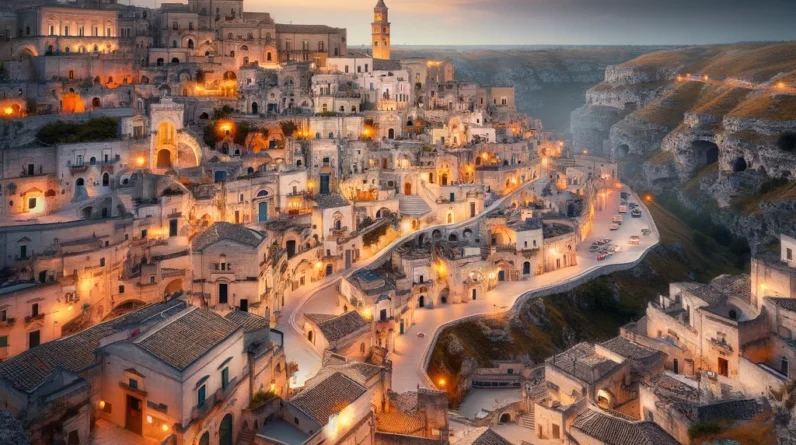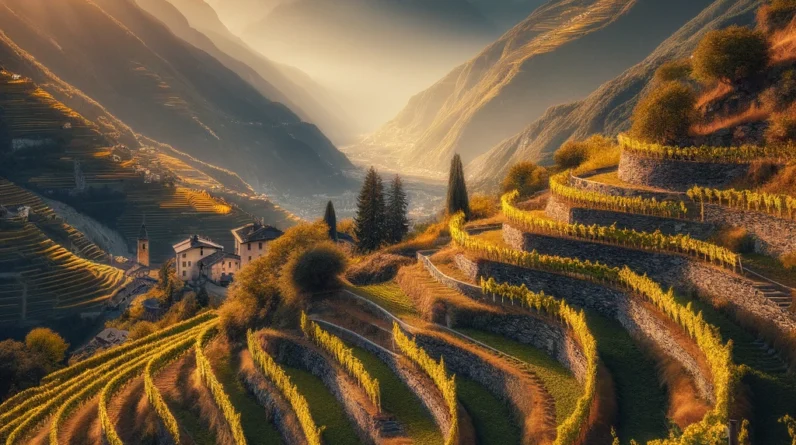
Exploring the Wines and Vineyards of Cotes de Blaye: A Connoisseur’s Guide
Nestled in the illustrious wine region of Bordeaux, France, lies a lesser-known, yet utterly captivating area known as Cotes de Blaye.
This enchanting region, with its rolling hills, picturesque landscapes, and centuries-old winemaking traditions, offers a unique and authentic wine experience.
Often overshadowed by its more famous neighbors, Cotes de Blaye is a hidden gem that deserves a spotlight for its exceptional wines and vineyards.
In this article, we journey through the heart of Cotes de Blaye, exploring its wine profiles, vineyards, regional characteristics, tourism opportunities, and how to bring a piece of this magic into your
own home.
So pour yourself a glass, and let’s embark on this delightful exploration together.
The Allure of Cotes de Blaye Wines
Cotes de Blaye, a hidden gem in the Bordeaux region, offers an enchanting array of wines.
This area is renowned for its primarily red wines, showcasing Merlot’s dominance, often blended with Cabernet Sauvignon and Cabernet Franc.
These wines are a celebration of richness and complexity, marked by ripe berry flavors, hints of spice, and a delightful earthiness.
They possess a unique balance of power and elegance, making them both approachable for new wine enthusiasts and revered by connoisseurs.

The Essence of Cotes de Blaye Wine Region: Terroir, Grapes, Soils, and Climate
Terroir: A Symphony of Elements
Cotes de Blaye, a prestigious sub-region of Bordeaux, France, is a testament to the concept of ‘terroir’ – the harmonious interaction of climate, soil, and vine.
This area, nestled on the right bank of the Gironde estuary, benefits from the gentle influence of the Atlantic, creating a microclimate that is both temperate and conducive to viticulture.
The terroir here is not just about the physical attributes; it’s a cultural heritage, a blend of tradition and innovation honed over centuries.
Grapes: The Heart of Flavors
The vineyards of Cotes de Blaye are a canvas for predominantly red grape varieties, with Merlot taking the lead, followed by Cabernet Sauvignon and Cabernet Franc.
These grapes form the backbone of Cotes de Blaye’s renowned red blends, known for their depth, elegance, and structure.
The region also dabbles in white grape varieties like Sauvignon Blanc and Semillon, producing crisp and aromatic whites that are gaining recognition.
Soils: The Foundation of Character
The soils of Cotes de Blaye are diverse, adding to the complexity of its wines.
The region boasts a mix of clay, limestone, and gravel.
The clay-limestone soils contribute to the robustness and longevity of the wines, while gravelly soils impart elegance and finesse.
This soil diversity is a crucial factor in the varied expressions of the same grape variety, offering a spectrum of flavors and aromas.
Climate: The Rhythms of Nature
Cotes de Blaye’s climate is significantly influenced by its proximity to the Gironde estuary and the Atlantic Ocean.
The maritime influence moderates temperatures, reduces the risk of frost, and ensures sufficient rainfall – creating an ideal environment for grapevines.
Summers are warm but not excessively hot, allowing for the gradual, balanced ripening of grapes.
This climate ensures consistency in vintage quality, a key element in the region’s winemaking success.
The Cotes de Blaye wine region, with its unique terroir, diverse grape varieties, varied soils, and favorable climate, stands as a proud representative of Bordeaux’s winemaking heritage.
It’s a region where the past and present merge seamlessly, resulting in wines that speak of their origin, crafted by hands guided by generations of knowledge.
For any wine enthusiast, Cotes de Blaye offers an authentic and enriching journey into the heart of Bordeaux’s wine country.

Vineyards with a Story to Tell
Each vineyard in Cotes de Blaye tells a story, rooted deep in history and tradition.
These vineyards range from family-owned plots to larger, more modern estates.
The common thread is their dedication to sustainable viticulture, respecting the land that gives life to their vines.
The region’s rolling hills, diverse soil types, and microclimates contribute significantly to the distinct character of the wines.
The connection between land, climate, and grape is palpable in every bottle from Cotes de Blaye.
| Vineyard Name | Notable Features | Wines Produced |
|---|---|---|
| Chateau Monconseil-Gazin
| Historic estate dating back to the 15th century, known for sustainable viticulture | Red and white wines, focus on Merlot and traditional Bordeaux blends |
| Chateau Marquis de Vauban
| Combines historical charm with modern techniques, named after the military engineer Vauban | Variety of red wines, known for elegant and structured profiles |
| Chateau Les Jouberts
| Family-run estate, central in the Cotes de Blaye region | Primarily red wines with a focus on Merlot |
| Chateau La Rose Bellevue
| Recognized for both traditional and innovative winemaking practices | Award-winning white and red wines, diverse range |
| Chateau Roland La Garde
| Renowned for organic and biodynamic practices, emphasizes terroir expression | Red wines known for their organic and biodynamic qualities |
| Chateau Segonzac
| One of the older estates, renowned for robust and elegant wines | Robust red wines with a focus on traditional Bordeaux varietals |
Winemaking Techniques in Cotes de Blaye
In Cotes de Blaye, winemaking techniques blend tradition with innovation, reflecting both the region’s rich heritage and its adaptation to modern practices.
Grape Selection and Harvesting
The winemaking process begins in the vineyard with meticulous grape selection.
Hand-harvesting is common, allowing for careful selection of ripe, healthy grapes.
Some vineyards may also use mechanical harvesting for efficiency.
Fermentation
Traditional fermentation takes place in a variety of containers, including stainless steel tanks, concrete vats, and wooden barrels.
The choice depends on the winemaker’s preference and the style of wine being produced.
Temperature-controlled fermentation is often employed to ensure optimal extraction of flavors and tannins.
Maceration and Extraction
This step involves the extraction of color, tannins, and aromas from the grape skins.
Winemakers in Cotes de Blaye might use techniques like pump-overs, punch-downs, or extended maceration, depending on the desired wine profile.
Aging
Aging is a crucial step for many Cotes de Blaye wines, particularly the reds.
The wines are aged in oak barrels, which impart additional complexity, tannins, and flavors like vanilla and spice.
The duration and type of oak (new vs. old, French vs. American) vary based on the wine style.
Blending
Blending is a hallmark of Bordeaux winemaking, and Cotes de Blaye is no exception.
Wines are often a blend of different grape varieties, such as Merlot, Cabernet Sauvignon, and Cabernet Franc, to achieve a balanced and complex final product.
Bottling and Aging
After aging, the wines are bottled, and some may undergo further aging in the bottle before release.
This bottle aging allows the flavors to meld and evolve, adding to the wine’s complexity.
Sustainable and Organic Practices
There’s a growing trend towards sustainable and organic winemaking in Cotes de Blaye.
Practices like reduced use of chemicals, organic viticulture, and biodynamic principles are increasingly adopted to maintain ecological balance and express the true character of the terroir.
Modern Innovations
Many winemakers are also embracing modern technologies and innovations, such as precision viticulture, drone monitoring of vineyards, and state-of-the-art winery facilities, to enhance the
quality and character of their wines.
These techniques illustrate the region’s commitment to quality and its respect for tradition, while also embracing modern advancements to continuously improve and refine the winemaking
process.
The result is a range of wines that not only reflect the unique terroir of Cotes de Blaye but also the skill and artistry of its winemakers.

A Region Shaped by Nature and Tradition
Cotes de Blaye’s winemaking traditions intertwine with its unique geographical characteristics.
The region benefits from a temperate climate, moderated by the Gironde estuary, creating ideal conditions for grape growing.
The soil, a mix of clay, limestone, and gravel, adds complexity and minerality to the wines.
This combination of climate and terroir is crucial in producing wines with a sense of place – a true expression of Cotes de Blaye.
What is So Unique about Cotes de Blaye?
Cotes de Blaye wines hold a special place in the world of viticulture, particularly within the Bordeaux region, for several compelling reasons.
Unique Terroir
Cotes de Blaye boasts a distinctive terroir that is a confluence of climate, soil, and topography.
Its location along the Gironde estuary imparts a unique microclimate, characterized by moderate temperatures and sufficient rainfall.
This terroir is crucial in shaping the flavor profiles and quality of the wines.
Diversity of Grapes and Wine Styles
While the region is primarily known for its red wines, primarily Merlot, Cabernet Sauvignon, and Cabernet Franc, it also produces notable white wines from Sauvignon Blanc and Semillon.
This diversity allows wine lovers to explore a range of styles, from robust and complex reds to fresh and aromatic whites.
Balance of Tradition and Innovation
Cotes de Blaye vineyards are a blend of historical practices and modern viticulture techniques.
This balance ensures that the wines not only retain their traditional character but also benefit from contemporary advancements in winemaking.
Quality at an Accessible Price Point
Compared to some of their more famous Bordeaux counterparts, Cotes de Blaye wines often represent exceptional value.
They offer the sophistication and depth associated with Bordeaux wines but at more accessible price points, making them popular choices among a wide range of wine enthusiasts.
Aging Potential and Versatility
Many of the red wines from Cotes de Blaye have excellent aging potential, developing more nuanced flavors over time.
However, there are also wines crafted for immediate consumption, showcasing the versatility of the region.
Sustainable and Artisanal Winemaking
There is a notable trend towards sustainable and organic winemaking practices in Cotes de Blaye.
Many vineyards are adopting environmentally friendly techniques, contributing to the quality and character of their wines.
Cultural and Gastronomic Harmony
Cotes de Blaye wines are not just beverages; they are a part of the region’s cultural fabric.
They pair wonderfully with a variety of cuisines, especially local French dishes, enhancing the gastronomic experience.
In summary, Cotes de Blaye wines captivate with their unique terroir, diverse styles, blend of tradition and innovation, and excellent value.
They embody the essence of Bordeaux winemaking, offering a rich, authentic experience that appeals to both casual drinkers and connoisseurs.
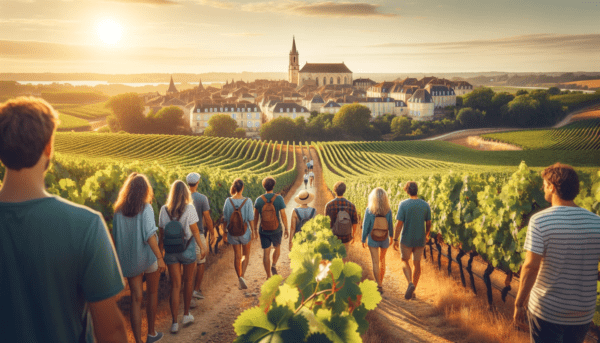
Wine Tourism: An Enriching Experience
Visiting Cotes de Blaye is a delightful experience for any wine lover.
The region offers a range of activities from vineyard tours to wine tastings, often hosted by passionate winemakers eager to share their craft.
Many vineyards also offer food pairings, showcasing local cuisine alongside their wines.
Beyond the vineyards, the region’s picturesque landscapes and historical sites provide a perfect backdrop for a memorable wine-centric getaway.
Visiting the Cotes de Blaye region offers not just a journey through exceptional wines but also an opportunity to explore a wealth of cultural and natural attractions.
Citadel of Blaye
A UNESCO World Heritage Site, the Citadel of Blaye is a magnificent fortress designed by the famous military architect Vauban in the 17th century.
It offers breathtaking views over the Gironde estuary and is a gateway to the region’s rich history.
Vineyards and Chateaux
Exploring the vineyards and chateaux of Cotes de Blaye is a must.
Many estates offer tours and tastings, where you can learn about the winemaking process and sample the local wines.
Some notable ones include Chateau Marquis de Vauban and Chateau Monconseil-Gazin.
Bourg-sur-Gironde
This charming village sits at the confluence of the Dordogne and Garonne rivers.
It’s known for its picturesque streets, ancient architecture, and the Bourg Wine and Vine Museum, which delves into the history of winemaking in the region.
Gironde Estuary
Take a boat tour along the Gironde estuary to enjoy the scenic beauty of the region from a different perspective.
It’s also a great way to see the Citadel of Blaye from the water.
Caves of Pair-non-Pair
Near the town of Prignac-et-Marcamps, these prehistoric caves are one of the oldest decorated caves in the world, showcasing engravings that date back over 30,000 years.
Local Markets and Gastronomy
Visit the local markets in Blaye and the surrounding towns to experience the region’s vibrant gastronomy.
Here, you can sample local delicacies, fresh produce, and, of course, the local wines.
Hiking and Biking Trails
The region offers numerous trails for hiking and biking.
These trails wind through vineyards, along the estuary, and into the countryside, offering a great way to experience the natural beauty of the area.
Saint-Emilion
A short drive away is the famous town of Saint-Emilion, another key wine region in Bordeaux.
Its medieval architecture, monolithic church, and world-class wines make it a worthy addition to your itinerary.
Each of these destinations provides a unique window into the culture, history, and natural beauty of the Cotes de Blaye region, making your visit both enriching and memorable.
Whether you’re a wine enthusiast, history buff, nature lover, or simply looking to explore the French countryside, Cotes de Blaye has something special to offer.
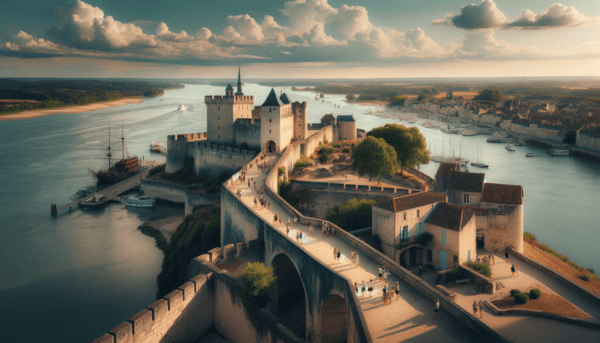
Practical Tips on Visiting Cotes de Blaye Region
Visiting the Cotes de Blaye region is a delightful experience, but like any trip, it requires some planning.
Accommodation
Book your accommodation in advance, especially if you’re traveling during peak tourist season (summer and early autumn).
You can choose from charming bed-and-breakfasts, boutique hotels, or even stay at a vineyard estate for a more immersive experience.
Transportation
Renting a car is highly recommended.
The Cotes de Blaye region, like much of rural France, is best explored with your own vehicle as public transport options can be limited.
This gives you the flexibility to visit remote vineyards and attractions at your own pace.
Winery Visits
Plan your winery visits ahead of time.
Some smaller wineries might require appointments for tours and tastings.
Research in advance and make bookings where necessary.
Also, check if the winery offers English-speaking tours if needed.
Wine Tasting Etiquette
When wine tasting, it’s customary to spit out wine after tasting, especially if you’re visiting multiple vineyards in a day.
This allows you to appreciate the wines without consuming too much alcohol.
Local Cuisine
Make sure to try the local cuisine.
The region is known for its fresh, local produce and traditional French dishes.
Visiting local markets and restaurants is a must.
Dress Accordingly
Wear comfortable clothes and shoes, especially if you plan to tour vineyards or walk around the historic sites.
The weather can be variable, so it’s a good idea to carry layers.
Language
Knowing some basic French phrases can greatly enhance your experience, as not everyone might speak English, especially in more rural areas.
Even simple phrases in French can go a long way in showing respect and willingness to engage with the local culture.
Local Laws and Customs
Be aware of local laws and customs, particularly regarding alcohol consumption and driving.
The legal drinking age in France is 18, and there are strict drunk driving laws.
Cash and Cards
While credit cards are widely accepted, it’s good to have some cash, especially for smaller purchases in markets or in rural areas.
Stay Connected
Consider getting a local SIM card for your mobile device for easy navigation and communication.
Health and Safety
Always have a basic first-aid kit and any personal medications.
Also, check for any travel advisories or health-related recommendations, especially if traveling during any health crises.
By following these tips, you’ll be well-prepared to fully enjoy the enchanting landscapes, rich history, and exquisite wines of the Cotes de Blaye region.
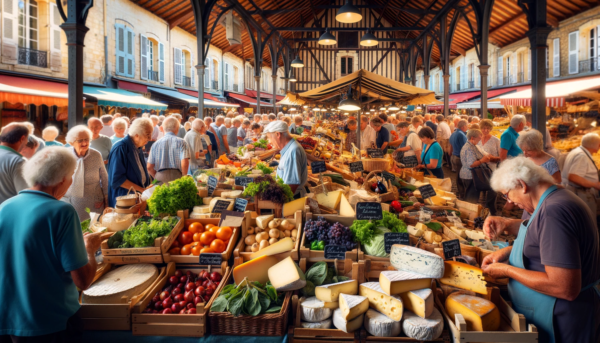
The Foods of Cotes de Blaye
The Cotes de Blaye region, with its rich culinary heritage, offers a variety of traditional dishes that pair wonderfully with its wines.
Lamproie à la Bordelaise (Lamprey in Bordeaux Sauce)
This is a classic Bordeaux dish where lamprey, a jawless fish, is cooked in a rich sauce made with red wine, leeks, and spices.
Pair it with a robust Cotes de Blaye red wine, which complements the dish’s depth and complexity.
Entrecôte à la Bordelaise (Bordeaux-Style Rib Steak)
This dish features a grilled rib steak topped with a savory sauce made from Bordeaux red wine, shallots, and bone marrow.
The richness of the steak and the sauce pairs perfectly with the structured and tannic red wines of Cotes de Blaye.
Cèpes de Bordeaux (Bordeaux Mushrooms)
Cèpes, or porcini mushrooms, are often prepared sautéed or in stews.
These earthy and flavorful mushrooms go well with both the red and white wines of Cotes de Blaye, depending on the preparation.
Canelé de Bordeaux
These small, caramelized pastries with a custard center are a sweet treat from the region.
While traditionally paired with sweet wines, they can also be a delightful contrast to the more acidic white wines of Cotes de Blaye.
Huîtres d’Arcachon (Arcachon Oysters)
The nearby Arcachon Bay is famous for its oysters.
Enjoy them raw with a crisp and refreshing Cotes de Blaye white wine, such as a Sauvignon Blanc, which complements the oysters’ briny flavors.
Pauillac Lamb
A regional specialty, this tender and flavorful lamb can be roasted or grilled and pairs beautifully with the medium to full-bodied red wines of Cotes de Blaye, accentuating the meat’s succulent
flavors.
Cabécou Cheese
This soft goat cheese from the nearby Perigord region is delightful with Cotes de Blaye white wines.
The wine’s acidity and fruitiness balance the creamy and tangy flavors of the cheese.
These pairings showcase the gastronomic richness of the Cotes de Blaye region and its wines.
The traditional dishes, characterized by bold and earthy flavors, are harmoniously complemented by the diverse wine profiles from Cotes de Blaye, enhancing the overall dining experience.
Bringing Cotes de Blaye to Your Table
For those looking to savor Cotes de Blaye wines at home, they are increasingly available in international markets.
When selecting a bottle, consider the vintage, as it can significantly influence the wine’s character. Y
ounger vintages offer freshness and vibrancy, while older ones boast complexity and depth.
Cotes de Blaye wines offer excellent value, making them a smart choice for both casual drinking and special occasions.
Best Vintages in Cotes de Blaye
1990: For those interested in older vintages, 1990 is often cited as a stellar year, with wines that have aged gracefully and maintained their complexity.
2000: Marking the turn of the millennium, this vintage was celebrated for its quality and is considered a benchmark year.
2005: This year is often mentioned among the great vintages of the early 21st century, producing wines with excellent balance, structure, and potential for aging.
2010 and 2009: These years are often celebrated as exceptional across Bordeaux, known for producing wines with great balance, structure, and aging potential.
2015 and 2016: Both vintages are highly regarded, with 2016 particularly noted for its consistent quality.
These years produced wines with excellent structure and complexity, and they are expected to age well.
2018: This is another standout year, especially for red wines.
The wines from this vintage are known for their richness, depth, and longevity.
It’s important to note that while these vintages are generally celebrated, the quality can vary from one vineyard to another.
Additionally, more recent vintages might not have been fully evaluated yet for their long-term potential.
When selecting a bottle, it’s also beneficial to consider the specific wine and vineyard, as some may excel in years that weren’t broadly exceptional across the region.
Cotes de Blaye is a region that captivates with its blend of tradition, natural beauty, and exceptional wines.
Whether through a visit to its vineyards or a glass savored at home, the wines of Cotes de Blaye provide a journey into the heart of Bordeaux’s lesser-known, yet equally enchanting, landscapes.
For every wine enthusiast, from the curious novice to the seasoned aficionado, Cotes de Blaye offers a rich, multifaceted experience that is both accessible and deeply satisfying.
FAQs:
Q1: What makes Cotes de Blaye unique in the world of wine?
A1: Cotes de Blaye stands out for its distinctive terroir – a special blend of climate, soil, and traditional winemaking practices.
Its proximity to the Gironde estuary provides a unique microclimate, and the varied soils contribute to the complex flavor profiles of its wines.
This region is a beautiful amalgamation of history, culture, and viticulture, producing wines with a unique identity.
Q2: Which grape varieties are most commonly grown in Cotes de Blaye?
A2: The region predominantly grows red grape varieties, with Merlot being the most prominent, often blended with Cabernet Sauvignon and Cabernet Franc.
There’s also a growing presence of white grape varieties like Sauvignon Blanc and Semillon, which are used to produce fresh and aromatic white wines.
Q3: How does the climate in Cotes de Blaye affect wine production?
A3: The climate in Cotes de Blaye is temperate with a significant maritime influence, ensuring mild winters and warm summers.
This consistent climate aids in the steady ripening of grapes, ensuring balanced acidity and sugar levels, which are crucial for producing high-quality wines.
Q4: What types of soils are found in Cotes de Blaye, and how do they influence the wines?
A4: The soils in Cotes de Blaye are a mix of clay, limestone, and gravel.
Clay-limestone soils contribute to the robustness and aging potential of the wines, while gravel soils lend elegance and a refined structure.
This soil diversity allows for a wide range of wine styles within the region.
Q5: Can visitors experience wine tours and tastings in Cotes de Blaye?
A5: Absolutely! Cotes de Blaye offers a range of wine tourism experiences, including vineyard tours, tastings, and even harvest experiences.
Visitors can meet winemakers, learn about traditional and modern winemaking techniques, and of course, sample the exquisite wines of the region.
Q6: Are Cotes de Blaye wines suitable for aging?
A6: Many Cotes de Blaye wines, especially the red blends, are well-suited for aging.
They develop added complexity and depth over time. However, the region also produces wines that are meant to be enjoyed young, highlighting the fresh and fruity characteristics of the grapes.
Q7: How can I pair Cotes de Blaye wines with food?
A7: Cotes de Blaye red wines pair wonderfully with red meats, game, and hearty stews, while the whites are excellent with seafood, poultry, and salads.
The key is to match the intensity and flavor profile of the wine with that of the dish.

Master the Art of Wine with Vino Cards: Your Ultimate Wine Learning Companion!
🍇 Dive Into the World of Wine – One Card at a Time! 🍷
Whether you’re a budding wine enthusiast or a seasoned connoisseur, our Vino Cards Wine Learning Flashcards are your perfect guide to the vast and delightful world of wines.
🎴 What’s Inside the Deck?
- Detailed Wine Profiles: Each card unveils a new variety, from popular favorites to hidden gems.
- Expert Tasting Notes: Learn to identify key flavors, aromas, and characteristics like a pro.
- Food Pairing Suggestions: Elevate your dining experience with perfect wine-food combinations.
🏡 Ideal for Cozy Evenings or Social Gatherings, these flashcards turn wine learning into a fun and engaging activity. Spread them out at your next dinner party, or curl up for a solo study session – the choice is yours!
🧠 Why Vino Cards?
- Easy and Accessible Learning: Simplified content that’s perfect for beginners yet insightful for experts.
- Interactive and Enjoyable: Transform your wine education into an interactive adventure.
- Build Your Wine Confidence: Impress friends and family with your newfound knowledge.
🍾 Join the Community of Wine Lovers: Vino Cards are more than just flashcards; they’re your ticket to a passionate community of wine enthusiasts.
🎁 The Perfect Gift for Any Wine Lover: Whether it’s for a birthday, holiday, or just because, these flashcards are a thoughtful and unique present.
🔗 Get Your Vino Cards on Amazon
🥂 Raise Your Glass to Learning and Discovery – One Wine at a Time!


